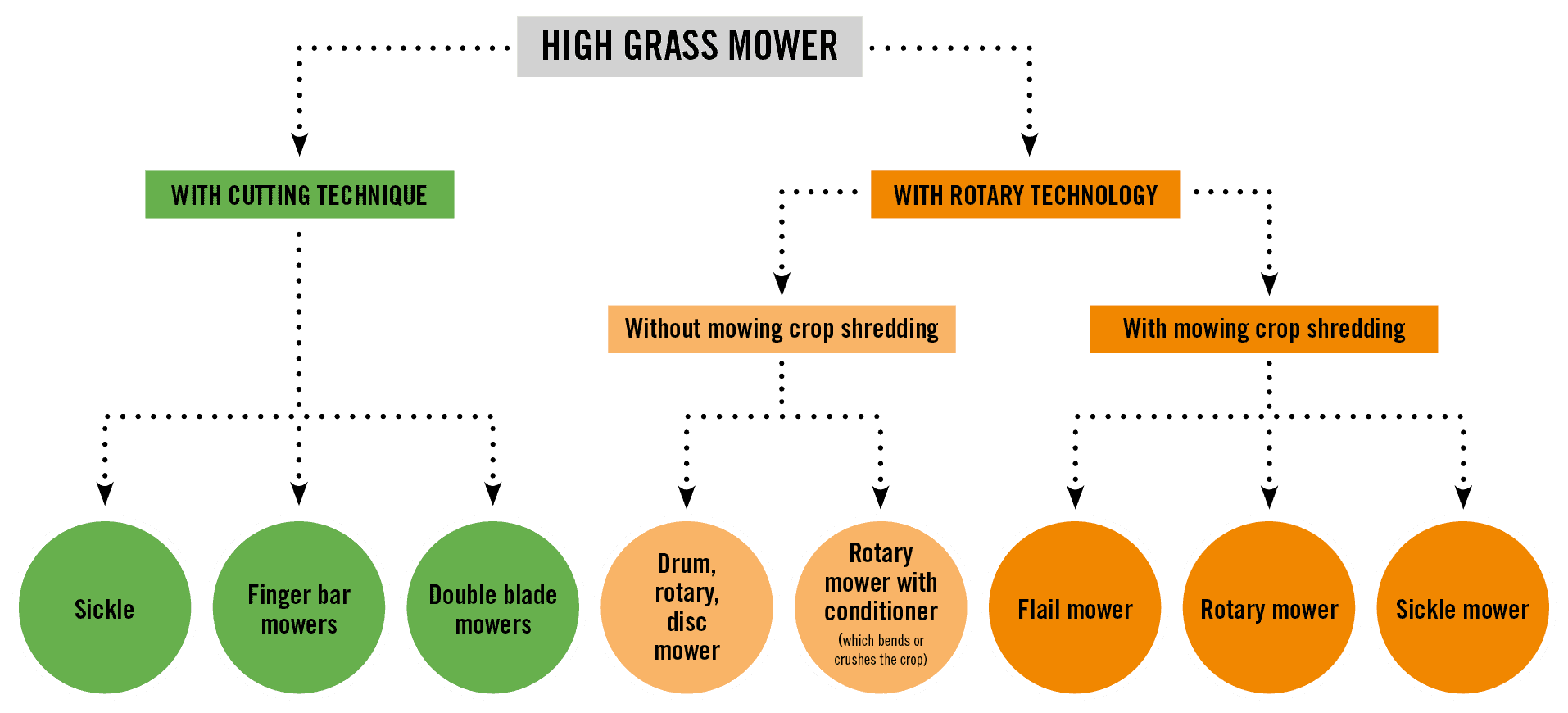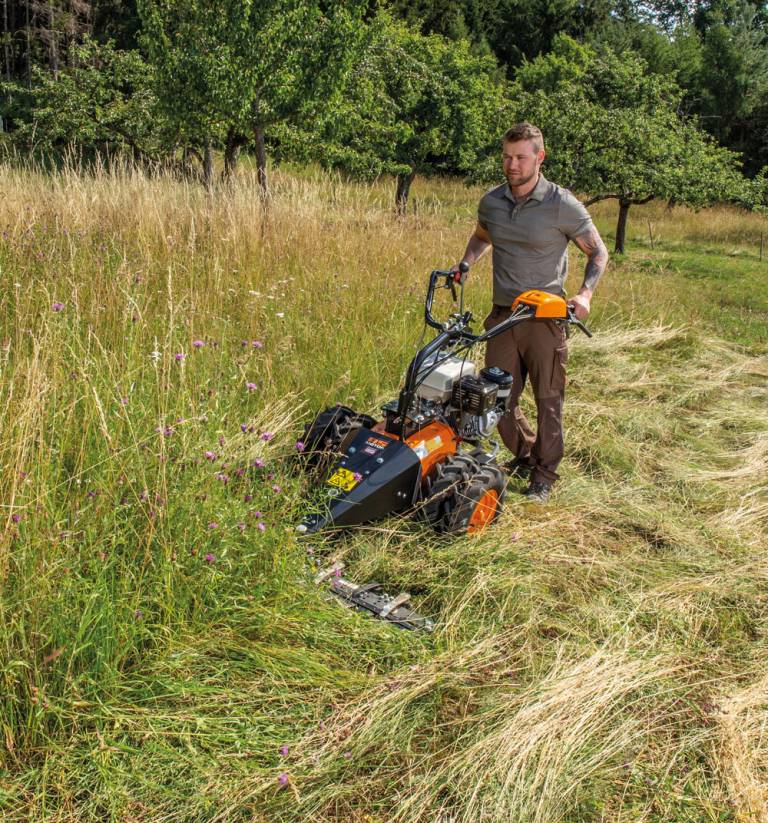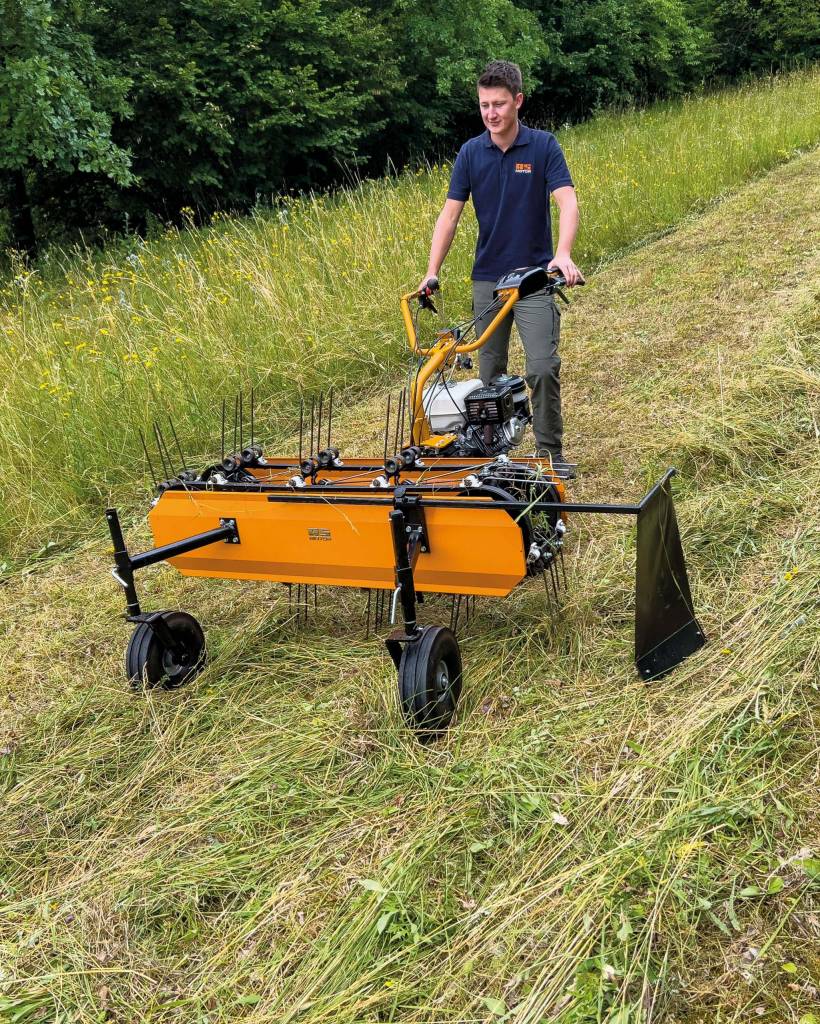Technical solutions for high grass mowing
Unfortunately, nature conservation faces a dilemma when it comes to mowing grassland.
Extensive mowing is necessary to keep the areas open and ensure a diverse flora. This in turn creates a rich habitat for fauna.
At the same time, mowing physically injures animals and insects and abruptly alters their habitat.
Maintaining a balance between nature conservation, profitability and occupational safety
If neither mowing nor non-mowing produces meaningful results, what should you do? As is often the case, the solution boils down to a compromise.
Above all, the maintenance period and frequency have a decisive influence on which animal and plant species settle in an area permanently
The following mowing techniques are available today and used in a meaningful combination in green space management:

Which combination makes ecological sense for your application areas? We are happy to advise you, request a free consultation!
In focus: The beam mower
Oscillating grass-cutting techniques, better known as “beam mowers,” are particularly gentle on insects and small creatures. Triangular blades which run against each other cut the grass cleanly like scissors. The grasses and plants remain on the surface intact and uncrushed, where they start to dry.
At short intervals, the grass can then be dried by turning and then used as hay. The clippings can be removed manually, with a loader wagon or with a baling press.


Attachable belt rake for the AS 600 MultiPro implement carrier
Often, grassland maintenance is not finished with mowing. When using a sickle bar mower with the AS 600 MultiPro implement carrier, the next step is to remove the cut material from the area to prevent nutrient enrichment. The scarcity of nutrients on special grassland sites is an important prerequisite for the flowering of numerous wild herbs and rare species (such as meadow sage). Nutrient-poor sites thus produce a more colourful and species-rich plant composition.
In addition, these sites are often more care-extensive, i.e. they need less mowing. But the belt rake can also be used in various functions for smallholder agriculture to produce fodder.
In the first step, the machine functions as a tedder with higher engine speed and without swath cloth. In the second step, the forage is raked into swaths by use of the swath cloth at lower engine speed. Now the hay is easily loaded and transported away.